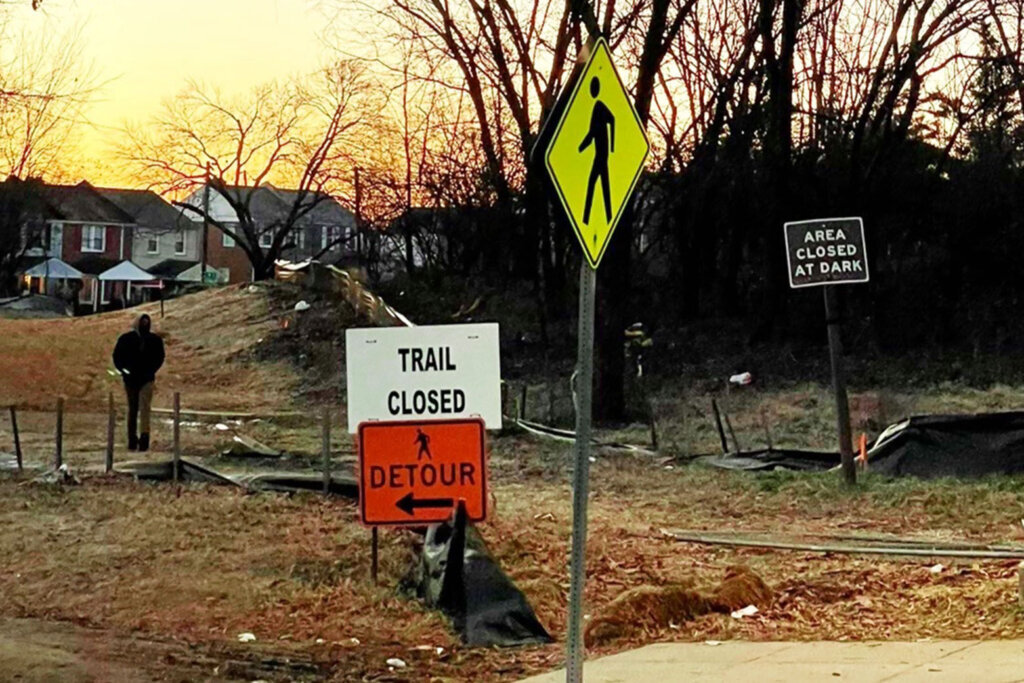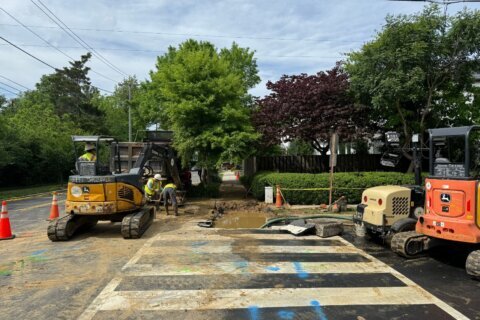
WTOP has learned two metal canisters discovered Tuesday in Fort Totten Park, in Northeast D.C., were World War I-era weapons, with physical similarities to chemical weapons found during a decadeslong cleanup of a former chemical weapons site near the American University campus.
U.S. Army Corps of Engineers spokeswoman Cynthia Mitchell said it’s not yet clear whether the canisters discovered in a mound of soil by a National Park Service employee, which are now being analyzed at Marine Corps Base Quantico, were empty.
“We expect preliminary, unofficial results on contents this week, and final confirmation next week,” Mitchell wrote in an email.
This is not the first time a World War I-era weapon was discovered in Fort Totten — one of seven Northeast D.C. forts used by the Union Army to defend the nation’s capital during the Civil War.
In 2020, the National Park Service discovered a World War I-era metal canister on the ground in a different area of Fort Totten Park. The Park Service said the Defense Department determined the munition was an “unfused and unused, empty canister.”
However, WTOP reported last year that the empty shell found in 2020 had been modified for use as a chemical weapon.
Mitchell said the canisters discovered Tuesday were very similar to chemical weapons found in Ward 3’s Spring Valley cleanup at the former American University Experiment Station that was used by the U.S. government for research and testing of chemical agents, equipment and munitions — once dubbed the “mother of all toxic dumps.”
“Munition one is ‘Livens-like’ — it doesn’t fit the exact measurements of the Livens projectors we’ve encountered during the Spring Valley cleanup, but it is very similar,” said Mitchell.
A Livens Projector was a simple mortar-like weapon that could throw large drums filled with toxic or flammable chemicals. The weapons were used during World War I, specifically between 1916 through 1918.
“Munition two is a 75-mm ordnance with a hex plug burster adapter, and is very typical of past finds at Spring Valley,” Mitchell said.
In a February 2022 interview, Spring Valley cleanup project manager Dan Noble said that the shell found in 2020 had been modified for use as a chemical weapon.
“When we looked at the X-rays, it was a 75-millimeter ordnance item that we encounter quite a bit at Spring Valley. It had a hex plug burster adapter screwed into the nose of the projectile. It would convert what was developed as a conventional munition into a chemical munition,” Noble said.
D.C. Del. Eleanor Holmes Norton and ANC commissioners Zachary Ammerman and Gordon-Andrew Fletcher have been calling on the National Park Service to more fully search the Ward 5 park, to investigate a possible link to the Spring Valley cleanup of chemical weapons.
This is a developing story. Stay with WTOP for the latest.








